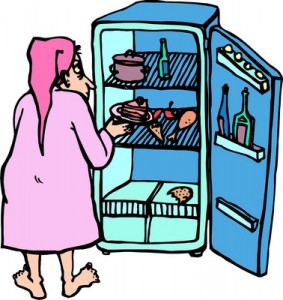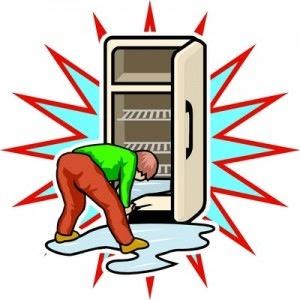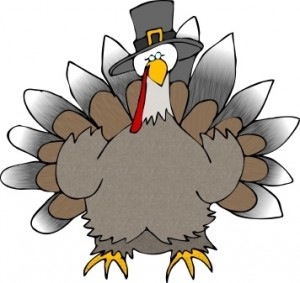 When you open your refrigerator door, what do you see? A bunch of random takeout boxes? Wait – there’s a couple of storage containers all the way in the back, too. Wonder what’s in them?
When you open your refrigerator door, what do you see? A bunch of random takeout boxes? Wait – there’s a couple of storage containers all the way in the back, too. Wonder what’s in them?
Open them up. Container #1: the leftover takeout moo shu pork from five days ago. Kind of a nasty odor. Container #2: half of the pasta special you brought home last night because the portion was huge. And in the storage containers? Last week’s meat sauce and some stir-fried veggies from who knows when. They’re kind of stinky too!
Big question: Can you eat any of it without getting sick?
How Long Can Food Stay Out?
According to the FDA, when you buy hot, cooked food, you should eat it right away and avoid letting it sit out at room temperature. If the food is cold, eat it within two hours of preparing it or else store it in the fridge or freeze it.
When Your Food is Delivered …
When food is delivered, you want to prevent any potentially nasty and harmful bacteria from multiplying, so eat it within two hours after it arrives (hopefully it hasn’t sat in the delivery person’s bike basket or car for too long – especially if it’s really hot outside).
If you aren’t going to eat it within two hours, keep it hot in an oven set at or above 200° F (93° C). Cover the food to keep it moist while you’re keeping it warm. Don’t guess at the temperature of the food — use a food thermometer to check that the food is kept at an internal temperature of 140° F (60° C).
The Danger Zone and The Two Hour Rule
The FDA defines the “danger zone” as the range of temperatures at which bacteria can grow. It is usually between 40° and 140° F (4° and 60° C). To keep food safe, it’s important to keep it below or above the “danger zone.”
Rules For Leftovers: 2 hours – 2 inches – 4 days
The Two Hour Rule: Throw away any perishable food (the kind that can spoil or become contaminated by bacteria if left unrefrigerated) that has been left out at room temperature for more than two hours. When the environmental temperature is above 90° F (32° C), throw out the food after one hour.
- 2 hours from oven to refrigerator: leftovers should be refrigerated or frozen within 2 hours of cooking or they should be thrown away.
- 2 Inches thick to cool it quick: food should be stored in containers at a shallow depth of about 2 inches or less, to speed the chilling time.
- 4 days in the refrigerator: use refrigerated leftovers within 4 days with the exception of stuffing and gravy which should be used within 2 days. Whatever you don’t finish, throw out.
- If you don’t think you’ll be able to eat leftovers within four days, freeze them immediately. Uncooked foods, such as cold salads or sandwiches, should be eaten or refrigerated promptly. Your goal is to minimize the time a food is in the “danger zone” — between 40 and 140 F (4 and 60 C) — when bacteria can quickly multiply.
- When you’re ready to eat leftovers, reheat them on the stove, in the oven or in the microwave. Solid leftovers should reach an internal temperature of 165 F (74 C) and liquid leftovers should be brought to a rolling boil. Slow cookers and chafing dishes aren’t recommended for reheating leftovers because they don’t get hot enough.
What You Need To Know
- Your fridge’s inside temperature needs to be between 33 and 40 degrees Fahrenheit (0.5 to 4.4 degrees Celsius). Not all areas of your fridge can hold these temperatures. It’s cooler in the back, so keep food like eggs, milk, cheese, and leftovers in the back and leave the warmer front area for things like sodas, water, and beer.
- Even though you put all your excess food in the fridge it can still go bad. Bacterial growth slows in colder temperatures, but it still happens.
- You don’t need to wait for hot food to cool before putting it in the fridge. When you leave food out to cool you give the bacteria the chance to multiply.
- Use shallow covered containers, 3 inches tall or less and leave some air space around them to promote rapid, even cooling of the food. Large, deep containers allow the food in the center of the container to remain warm for a longer time.
- When you store leftovers, cover them to keep in moisture and to prevent them from drying out. Covering hot leftovers and immediately putting them into a cold fridge can cause condensation so try letting them cool, uncovered, in the fridge for a few minutes before covering to minimize condensation. Or put the containers in an ice or cold water bath to cool them as quickly as possible before storing them in the refrigerator.
Forget the Sight and Smell Test
Bacteria don’t typically change the way food tastes, smells, or looks, so the sight and smell test most of us use to determine if food is good or not isn’t worth a hill of beans. Many foods might be rotten but still smell and even taste okay (unlike sour milk!). If you’re at all in doubt, throw it out!



